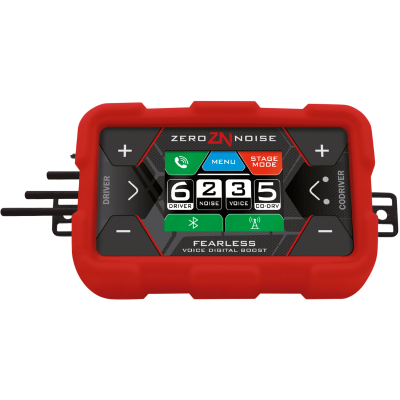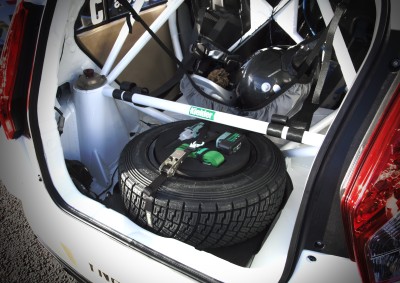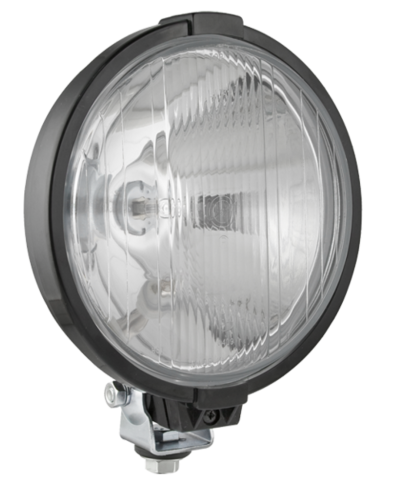AUG
Motorsport Bulbs Explained: A Simple Guide
Motorsport Bulbs Explained: A Simple Guide
When it comes to lighting in motorsport, there are several types of bulbs used, each working in a different way. Understanding how they create light helps explain why some are brighter or more efficient — and why some may or may not be allowed in certain events.
How Different Motorsport Bulbs Work
Halogen Bulbs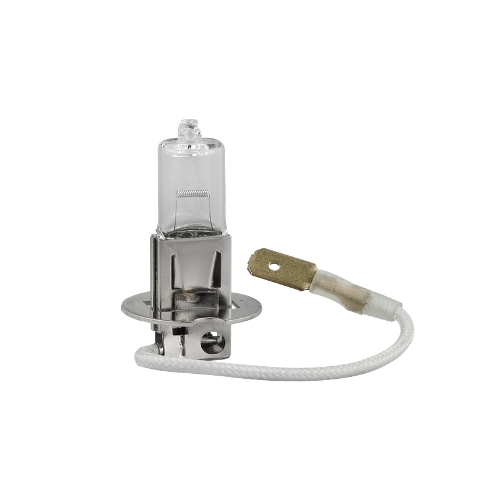
-
How they work: Halogen bulbs have a tungsten filament inside, like a traditional bulb, but with halogen gas (like iodine or bromine) filling the bulb.
-
The filament heats up when electricity flows through it, producing light.
-
The halogen gas recycles tungsten atoms, allowing the filament to run hotter, glow brighter, and last longer than a regular incandescent bulb.
-
Power: Usually higher wattage (e.g., 55-100W) to get bright light.
-
No special electronics needed — they run on standard voltage.
Xenon Gas-Filled Halogen Bulbs
-
Similar to halogen bulbs but filled with xenon gas instead of halogen.
-
They still have a filament, so light is produced by the filament glowing.
-
The xenon gas helps the filament run hotter and produce whiter, brighter light than traditional halogen gas.
-
Also no ballast needed.
Gas Discharge Bulbs (Including Xenon HID)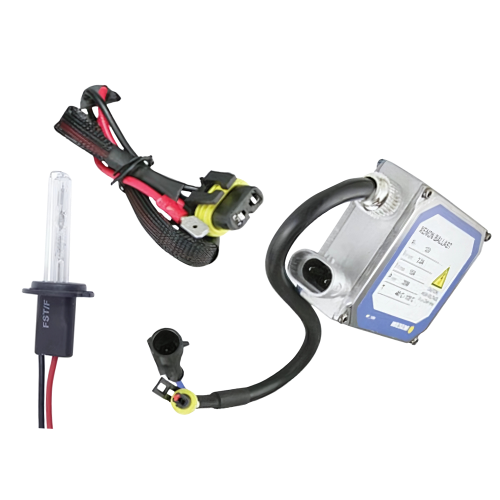
-
These bulbs don’t have a filament. Instead, they create light by an electric arc passing through gas (like xenon) inside a sealed tube.
-
The gas itself produces light directly when excited by electricity, which is why these bulbs can be much brighter while using less power (e.g., 35W Xenon HID can outshine a 100W halogen).
-
Require a ballast — an electronic device that provides the high-voltage start and regulates current to maintain the arc.
-
Often called HID (High-Intensity Discharge) lamps or Xenon HID lamps.
-
Usually not allowed in some motorsport events due to their brightness and advantage.
LED Bulbs
-
Use semiconductor chips to produce light when electric current passes through them.
-
Very efficient, bright, and long-lasting.
-
Instant-on light without warm-up time.
-
Low power consumption and durable.
-
Increasingly popular in motorsport for reliability and performance.
Optic Bulbs
-
Designed with special internal structures (like lenses or reflectors) to focus or shape the beam of light.
-
Can be halogen, LED, or gas discharge types but have optics built-in to improve light projection and distribution.
-
Useful in motorsport for precise lighting on stages or tracks.
Why Is Xenon HID Brighter Than Halogen Even at Lower Watts?
-
Xenon HID bulbs produce light from a gas arc, which is more efficient than heating a filament.
-
This means a 35W Xenon HID can emit more light than a 100W halogen bulb because the light source itself is brighter and focused differently.
What About Ballasts?
-
Xenon HID bulbs need a ballast — this device gives the bulb the initial high-voltage spark to start the arc and then regulates the current to keep the light stable.
-
Halogen and xenon gas-filled halogen bulbs don’t need ballasts; they run on normal voltage.
When “Gas Bulbs” Are Banned — What Can You Use?
-
If an event bans gas discharge lamps (like Xenon HID), you cannot use Xenon HID units because they are true gas discharge bulbs without filaments.
-
However, xenon gas-filled halogen-style bulbs (which still have filaments) are usually allowed because they function like standard halogen bulbs, just with a different gas inside.
-
Regular halogen bulbs are also allowed since they are incandescent filament bulbs.
Lumens vs Lux: What’s the Difference?
When you’re picking lights, you might see lumens and lux mentioned a lot. Here’s a quick, simple way to understand them.
-
Lumens measure how much light a bulb puts out in total — the overall light power.
-
Lux measures how bright that light looks on a specific surface — how much light actually lands there.
Think of it like this:
If you shine a torch on a big wall, the light spreads out and looks dim (low lux). But shine it on a book close by, and it’s much brighter (high lux) because the light is concentrated on a smaller spot.
Some manufacturers list lumens, others use lux, which can make it confusing. To compare, imagine trying to read a newspaper 700 metres away:
-
At 0.25 lux, the light hitting the paper is very faint — barely visible.
-
At 1 lumen spread over that distance, the light is even less focused and wouldn’t help you read at all.
So, lux gives a clearer idea of how useful the light is at a distance, while lumens just tell you how much light the bulb produces overall.
Understanding this helps explain why some lower-wattage bulbs can look brighter — they focus their light better, giving higher lux even with fewer lumens.
Quick Summary Table
| Bulb Type | Filament? | Gas Inside? | Light Produced By | Requires Ballast? | Typical Motorsport Use |
|---|---|---|---|---|---|
| Halogen (halogen gas) | Yes | Yes | Heated filament (incandescent) | No | Common, reliable, traditional |
| Xenon Gas-Filled Halogen | Yes | Yes (xenon) | Heated filament (incandescent) | No | Brighter halogen alternative |
| Xenon HID (Gas Discharge) | No | Yes (xenon) | Electric arc through gas | Yes | Very bright, efficient, sometimes banned |
| LED | No | No | Semiconductor chip | No | Efficient, reliable, growing use |
| Optic Bulbs | Varies | Varies | Varies | Varies | Special beam shaping (halogen, LED, HID) |
Need to buy some bulbs or lamps ? Just click here






